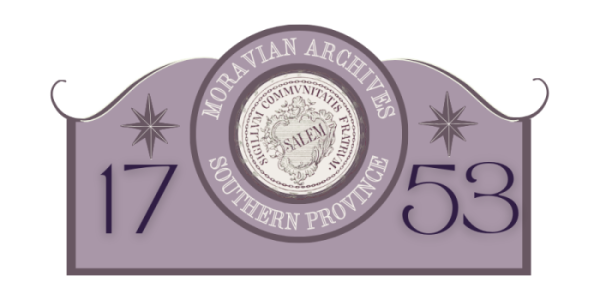Deaccession Policy
Deaccessioning is the process of removing materials or collections from the care and custody of the Moravian Archives. The purpose of this document is to outline the policies and procedures adopted by the Moravian Archives Commission for the Southern Province for deaccessioning materials held in the Archives.
Evaluation of Materials
Before the disposition of materials, the following questions will be considered by staff and an appraisal report completed if necessary.
- Does the material fall within the scope of the Archives current collection development policy?
- Is the material a duplicate where duplicate means same title, author, edition, publisher, and format with no inscription, autograph, or marginalia? If any of those factors are different from an existing item in the collection, the item will not be considered a duplicate. The Archives will maintain at least two copies of printed (e.g., books, periodicals, etc.) items – one for the Vault and one for the Research Library – and no more than two copies of archival records.
- Has the material deteriorated to the point that it cannot be safely handled by staff and users? Can it be conserved or restored to maintain safe handling? If so, does its scope and content merit those conservation and restoration efforts?
- What is the cost to the Archives of continuing to steward the material?
- Does the Archives have documentation proving clear title to the material? Do any externally imposed restrictions, such as donor agreements, apply to the material?
- How would deaccessioning the material affect public access to information and historical research? Can the material be digitized prior to deaccessioning to allow access through the Archives’ digital library?
Disposition of Materials
Formal deaccessioning occurs because the material has been reappraised according to the evaluation criteria above and found to be unsuitable for our holdings or because the legal owner has requested its return. If the material is unsuitable for our repository, it may be destroyed, returned to the donor, transferred to a more appropriate repository, or sold.
- Materials must be free of all legal obstacles. No materials will be deaccessioned when a written agreement between the donor and the Archives contradicting such an action exists.
- The proceeds from a sale of materials should be used for the direct care of existing collections in the organization’s holdings in compliance with the mission of the Moravian Archives.
- Direct care may include any of the following activities: identifying, recording, and locating collections contents; storing collections in a safe, well-maintained environment; handling collections in a way that prolongs their life and usefulness; conserving or restoring collections when necessary, including during in-house staff training; digitizing parts of collections for broader online access; ensuring that collections are accessible physically and intellectually when needed for display, loan, or research; monitoring collections’ location, use, and condition; and maintaining systems of record (e.g., collection management system (CMS), integrated library system (ILS), etc.) to facilitate the preceding activities.[1]
- If proceeds total more than $50,000, Archives staff will propose an allocation to the Moravian Archives Commission for consideration (i.e., percentage or amount to a stewardship campaign, endowment fund, annual budget, etc.), subject to final approval by the Provincial Elders Conference (PEC).
- The method of disposition will be determined jointly by the Director and Assistant Director.
- When deaccessioning is determined to be appropriate, responsibility for disposition of materials will be as follows: Materials valued at less than $5,000 may be deaccessioned at the discretion of professional staff after consulting with the Director. Materials valued $5,000-$50,000 will require additional approval from the Moravian Archives Commission. Materials valued more than $50,000 will require additional approval from PEC.
Types of Deaccessioning
Once disposition has been determined, a deaccession memo will be written to add to the collection file, detailing one of four methods of deaccessioning:
- Destruction. Outright destruction is a suitable method of disposition for materials that have been reappraised and determined not to have any merit for continued preservation.
- Transfer. Materials that have been evaluated and identified to be out-of-scope with our collection development policy and would be better served at another repository shall be made available to that repository for transfer of ownership. The repository receiving the collection will pay any expenses incurred for transfer and a records transfer form will be completed.
- Sale. The sale of such items, such as books, maps, and photographs, that are either duplicates or have no intrinsic or informational value to the Archives shall be conducted to further the mission of the Moravian Archives.
- Return to donor. Materials may be returned to the donor or other legal owner if they have requested the return of their materials.
Approved
Winston-Salem, North Carolina, January 19, 2024
Moravian Archives Commission
Moravian Church in America, Southern Province
Approved
Winston-Salem, North Carolina, January 30, 2024
Moravian Archives Commission
Moravian Church in America, Southern Province
[1] Adapted from the Smithsonian Organization and Audience Research (SOAR) report on Collections Care, accessed February 9, 2024: https://soar.si.edu/sites/default/files/reports/05.04.concernatthecore.care.pdf
